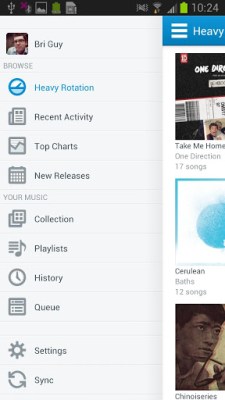When it comes to streaming music services, I seem to have a deadly touch.
The first victim was Napster–not the original, copyright-infringing version, but the legitimate, Best Buy-owned version that offered free monthly MP3 downloads plus unlimited streaming music. Napster couldn’t find a business model that stuck, and in late 2011 Rhapsody gobbled up Napster’s subscribers and shut the service down for good. By then, I’d already jumped from Napster to MOG, which is technically still alive but floundering. MOG’s new owner, Beats Electronics, is now building its own streaming service with Beats branding. The fate of MOG is unclear, but it doesn’t look good for the service as we know it.
I’m worried that Rdio, of which I became a paid user in December, may be the next one to fall. On Tuesday, the company announced that it’s expanding its free streaming service to more countries, but with similar limitations as before: Rdio lets you stream free music for “up to” six months, depending on how many songs you listen to. A meter at the top of the screen provides a vague sense of how much free music you have left. Once you reach the limit, it costs $5 per month for web access, or $10 per month to use Rdio’s mobile apps.
It’s hard to look at that model and see how it’ll draw users away from Spotify, which is clearly winning the on-demand streaming war. Spotify’s free service has ads, but no listening limits. (Technically, Spotify had a six month limit, but extended its unlimited offering indefinitely last March.)
That offer of free, unlimited music, without the anxiety of a depleting meter, has been a pretty effective lure for Spotify. As TechCrunch notes, Spotify boasts more than 20 million users, more than half of whom stay connected to the app through Facebook. Rdio, by comparison, won’t reveal actual user numbers, but with only 100,000-plus active users on Facebook, it’s clearly far behind the leader.
I don’t know if Rdio can be saved, but like Napster and MOG, it’s another service that doesn’t deserve the scrap heap.

Rdio’s software is its greatest asset. The design is stellar, both on the web and in its mobile apps, with just enough white space and some clever design consistencies across platforms that make its apps very easy to use. It also has some neat features: Start listening to a playlist on your computer, and your phone will automatically pick up where you left off (if you’re paying $10 per month for mobile access, that is). Your phone can also act as a remote control for Rdio on your computer, with no additional software or setup required. You can even use Rdio’s desktop website to sync songs to your mobile devices, so they’re ready to play offline.
Best of all–and this is where Spotify drives me crazy by comparison–you can create an iTunes-like “collection” of favorite artists and songs. With Spotify, playlists and an unorganized list of favorite tracks are your only means of organization, so it’s harder to listen to full albums and to quickly access favorite artists.
Rdio isn’t perfect; my biggest complaint is that its music selection is lacking compared to some other services. But I think its design and features make up for what its library lacks.
The problem is that people won’t realize any of this unless they actually use Rdio in earnest. And they won’t do that if it feels too much like a trial. Next to Spotify, that’s how everything short of unlimited listening feels.
At this point, though, it feels kind of cheap to just say that Rdio should mimic Spotify’s business model. I’m sure the company’s considered it, and there’s no guarantee it would even work. So instead I’ll just say this: If you have any inklings toward paying for streaming music, think about giving Rdio a shot first. Maybe you’ll like it better than the competition, and together we can save another good streaming service from meeting its maker.

